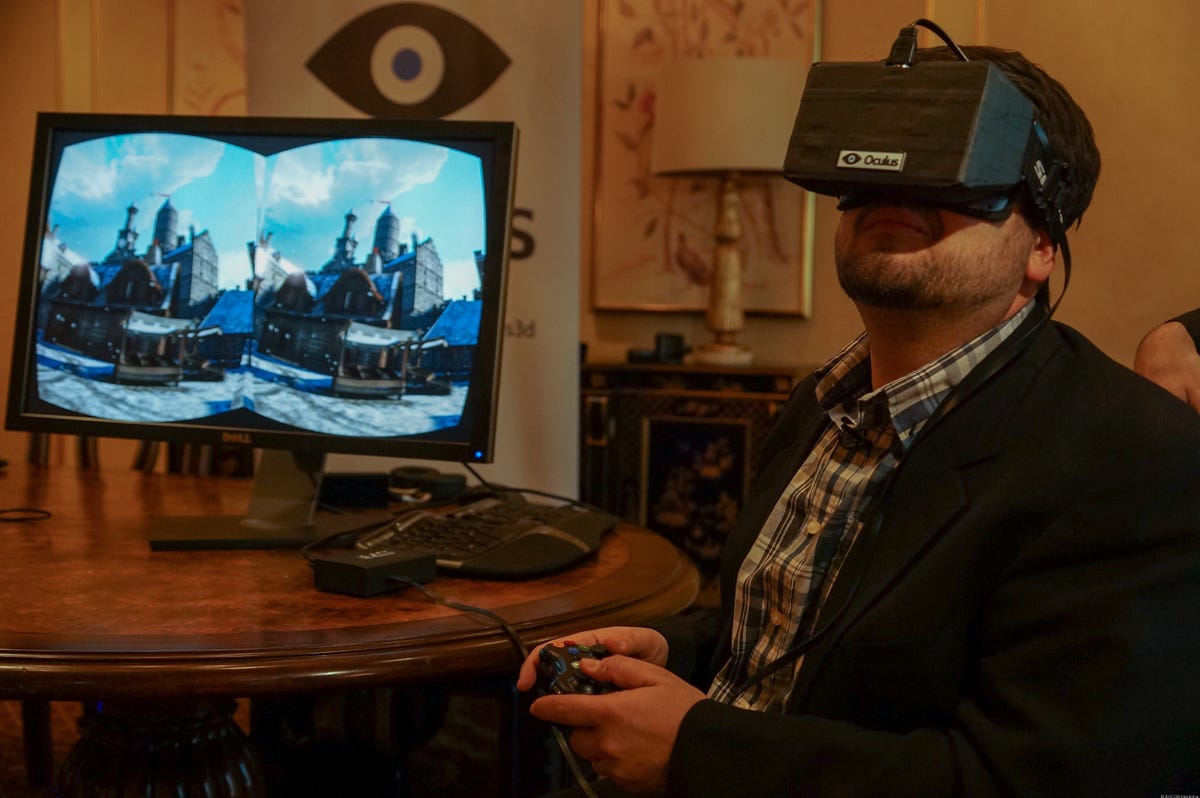 Why You Can Trust CNET
Why You Can Trust CNET Hands-on with VR headset Oculus Rift at CES 2013 (pictures)
CNET takes virtual reality headset Oculus Rift for a spin at CES 2013. The headset provides a stereoscopic virtual immersion experience.

Looking around
Oculus Rift is a headset that tracks head movement and uses two screens to provide an immersive virtual reality experience. CNET spent some time with the technology, which is still in development, at CES 2013.
One of the things that takes a minute or two to get used to is that you can simply look around to help navigate in games, versus using a mouse or second analog stick. You also get a sense of scale when looking up at structures, as CNET editor Scott Stein is doing here.
Inside the headset
Inside the headset you've got two screens that are set up so that you can focus even from a close distance. It closes up around your head to block out all ambient light, so you don't get any reflections.
The latest prototype
The company's latest prototype makes use of slightly larger displays inside that offer a faster pixel redraw rate, improving how quickly the image is refreshed. This still-unfinished model wraps the cable to the side and around the strap to get it out of the way.
Getting oriented with the Oculus Rift
The front of this unit is not what the final version will look like, the company says.
One-handed gaming
CNET editor David Katzmaier tries to walk around the virtual environment without using the second analog stick, something that can be avoided by simply looking in the direction you want to go.
Prototype box
One of the latest prototype models that will go out to those who paid the Kickstarter campaign for the software development kit. It hooks up to the little box on the left, which has a DVI jack, HDMI and micro USB.
Close up of the box
Simple, standard ports let you plug the unit into your PC gaming setup.

